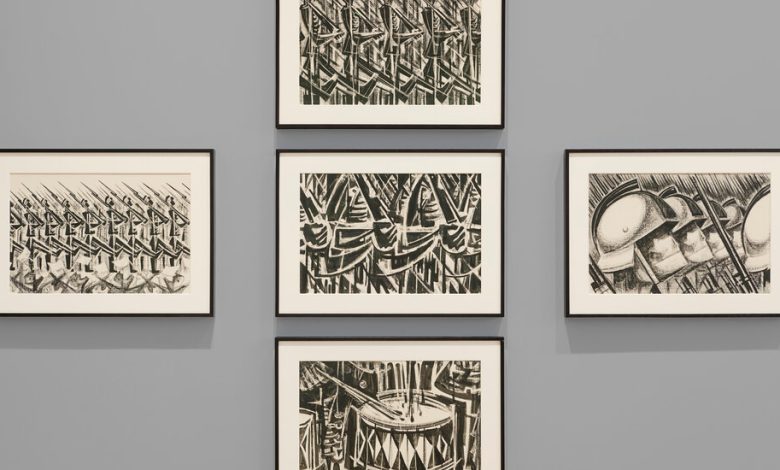After 70 Years, Si Lewen’s Wrenching ‘Parade’ Marches On

At the very beginning of Si Lewen’s “The Parade,” the series of untitled antiwar works on artist’s board that forms the pulsing heart of a new exhibition curated by the cartoonist Art Spiegelman, four sketchy, ecstatic boys and girls stride into the endless possibility of unmarked white gesso. In the second panel, a family leaning out their window catches sight of someone waving a flag.
The flag itself is also faint and white, but the family is surrounded by an ominous black shadow. And as that single flag turns into a parade, and the parade acquires rifles, swords, black banners and German helmets, Lewen’s painting and drawing — he made “The Parade” around 1950 with a mix of crayon, ink, paint and graphite — gets denser and darker.
As Spiegelman notes, the work is full of allusions. There’s a dog from “Guernica” and direct quotations from the notably antiwar German artists Otto Dix and George Grosz. “The Parade” has been exhibited in galleries, projected in a theater, and published as a book, each time in a slightly different edit, though this particular set of 63 images, hung around James Cohan Gallery in a single narrative line, is the first appearance of the originals in nearly 70 years. And just about every one of those 63 bears examining as an art work in its own right.
But one of the chief glories of the piece overall is seeing what happens to painting styles meant to be looked into when they’re dropped into a cinematic sequence that moves inexorably from left to right. Jagged rows of bayonets may borrow from Cubism’s fractured perspective, but here they chiefly mean clamor and noise. As the boys from the first panel become teenage cannon fodder and the dogs of war howl, a Jackson Pollock-style splatter is a jazzy nod to the art of the day, but also reads unmistakably as blood left behind by a firing squad.




